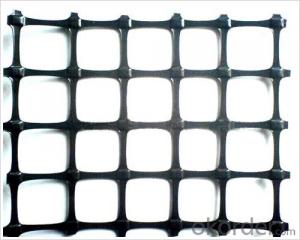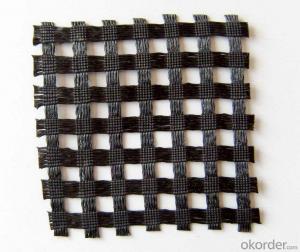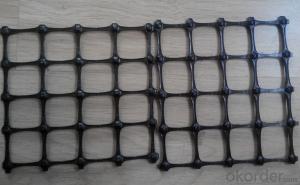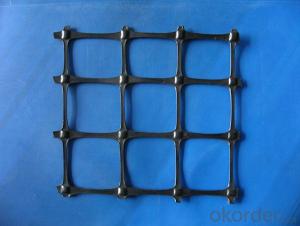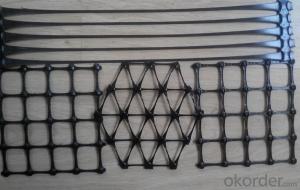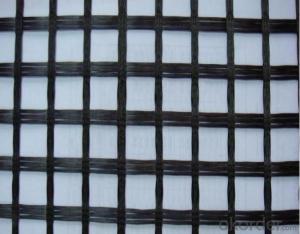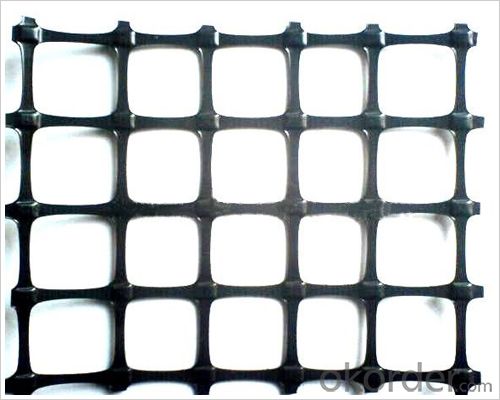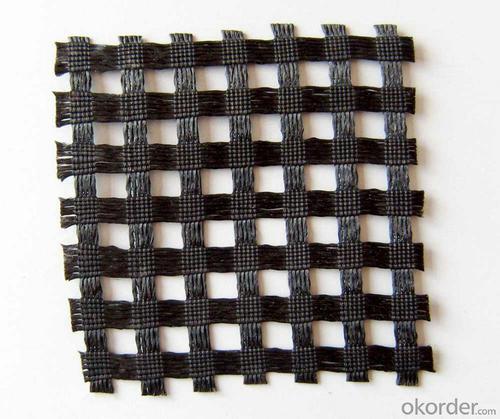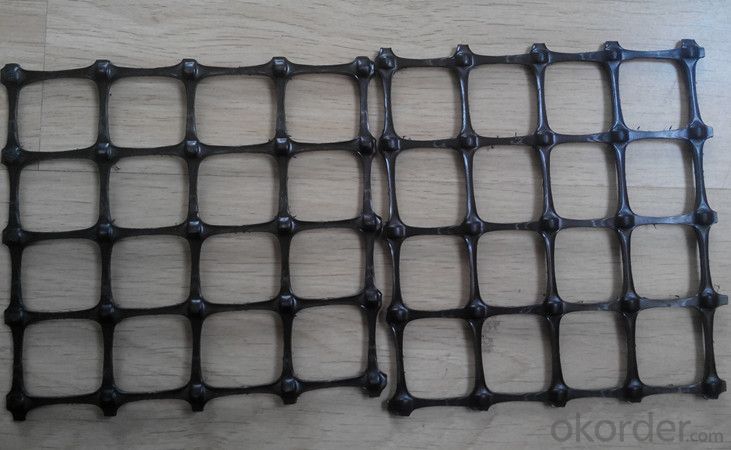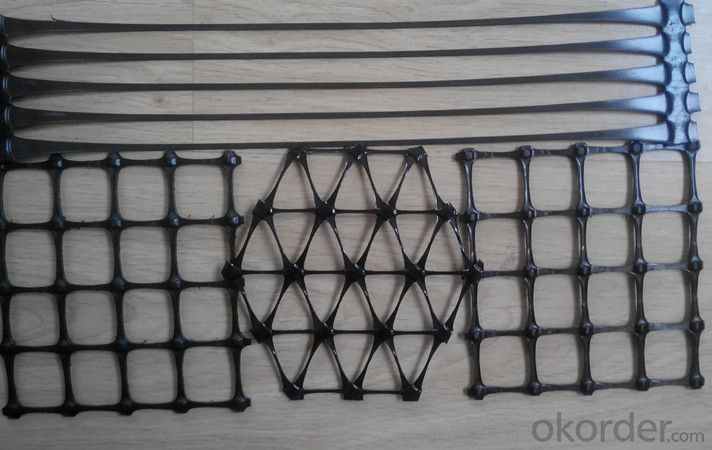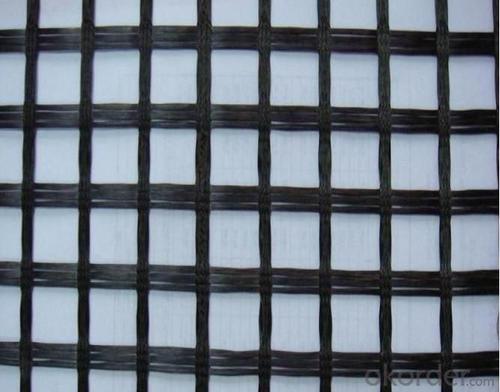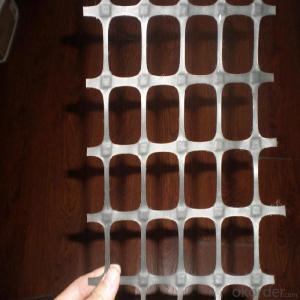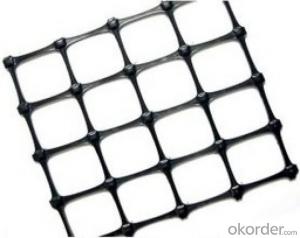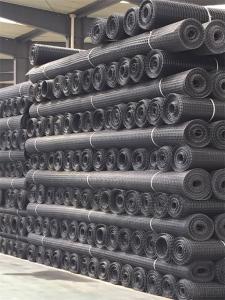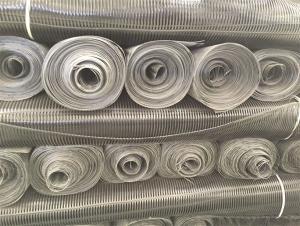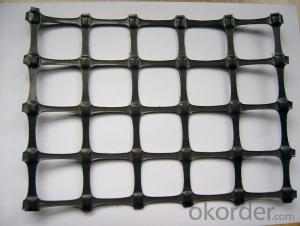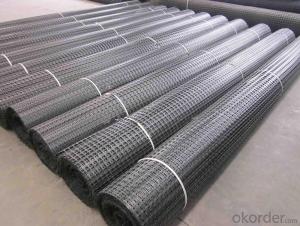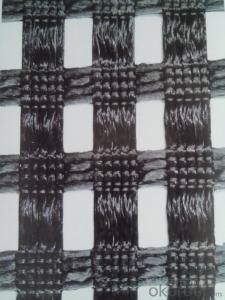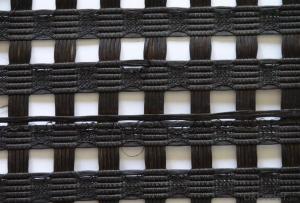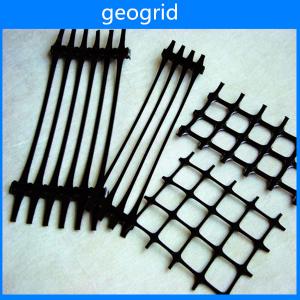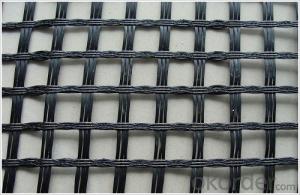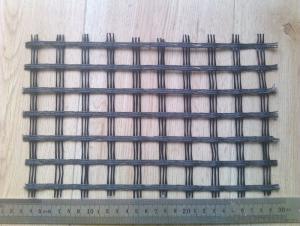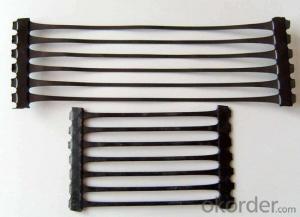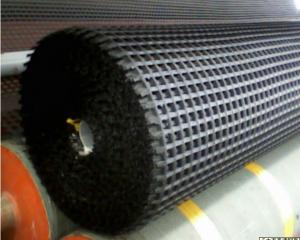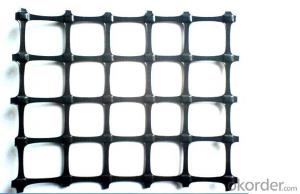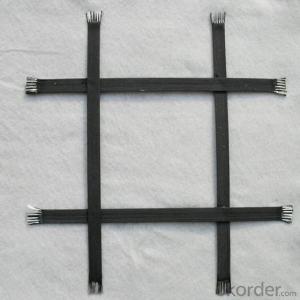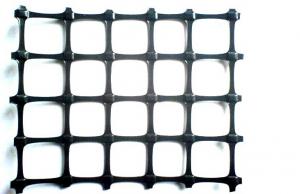Biaxial Plastic Geogrids for Soil Reinforcement Earthwork Products
- Loading Port:
- Tianjin
- Payment Terms:
- TT OR LC
- Min Order Qty:
- 500 m²
- Supply Capability:
- 100000 m²/month
OKorder Service Pledge
OKorder Financial Service
You Might Also Like
Applications:
Make reinforce treatment for various kinds of soft soil foundation to evenly distribute load stress and reduce uneven settlement, not easy to generate static electricity, and flammability property good in the coal mine. It is easy to wash coal.
Used in highway, railway, port, airport and municipal project. Support in the recovery working face of coal mine and roadway in the coal mine.
Index Properties | Test Method | Unit | GG1515 | GG2020 | GG3030 | GG4040 |
MD TD | MD TD | MD TD | MD TD | |||
Polymer | -- | -- | PP | PP | PP | PP |
Minimum Carbon Black | ASTM D 4218 | % | 2 | 2 | 2 | 2 |
Tensile Strength@ 2% Strain | ASTM D 6637 | Kn/m | 5 5 | 7 7 | 10.5 10.5 | 14 14 |
Tensile Strength@ 5% Strain | ASTM D 6637 | Kn/m | 7 7 | 14 14 | 21 21 | 28 28 |
Ultimate Tensile Strength | ASTM D 6637 | Kn/m | 15 15 | 20 20 | 30 30 | 40 40 |
Strain @ Ultimate Strength | ASTM D 6637 | % | 13 10 | 13 10 | 13 10 | 13 10 |
Structural Integrity | ||||||
Junction Efficiency | GRI GG2 | % | 93 | 93 | 93 | 93 |
Flexural Rigidity | ASTM D 1388 | Mg-cm | 700000 | 1000000 | 3500000 | 10000000 |
Aperture Stability | COE Method | mm-N/deg | 646 | 707 | 1432 | 2104 |
Dimensions | ||||||
Roll Width | -- | M | 3.95 | 3.95 | 3.95 | 3.95 |
Roll Length | -- | M | 50 | 50 | 50 | 50 |
Roll Weight | -- | Kg | 39 | 50 | 72 | 105 |
MD denotes Machine direction. TD denotes transverse direction. | ||||||
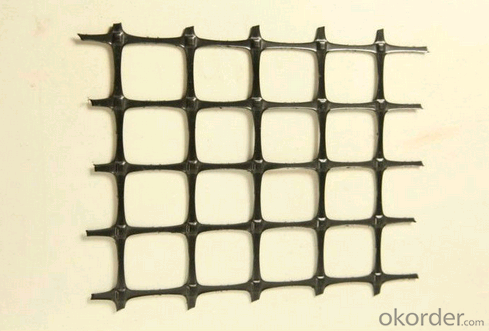
| Packaging Details: | according to your need |
| Delivery Detail: | 7days |
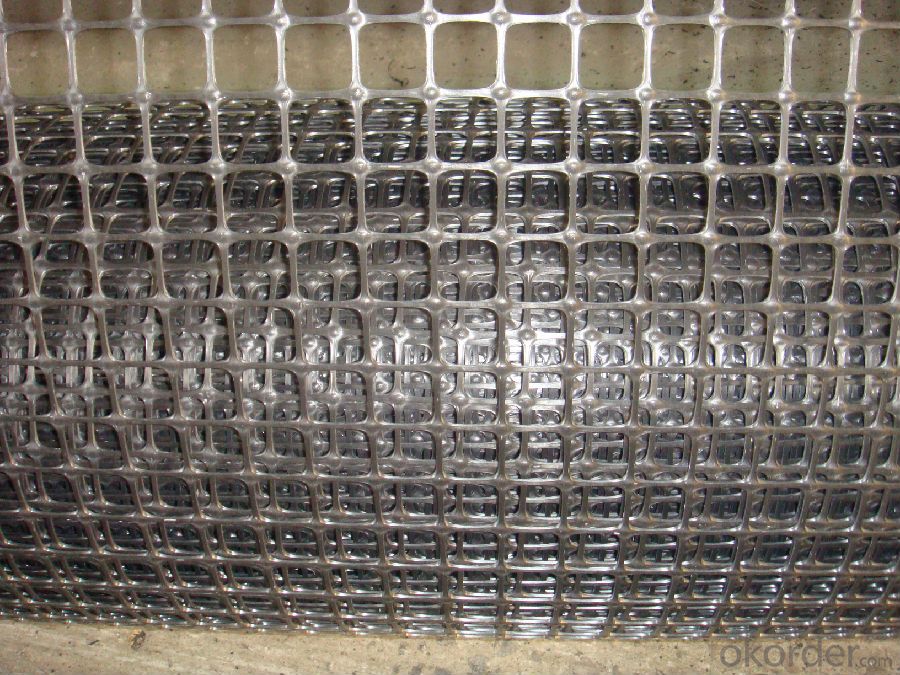

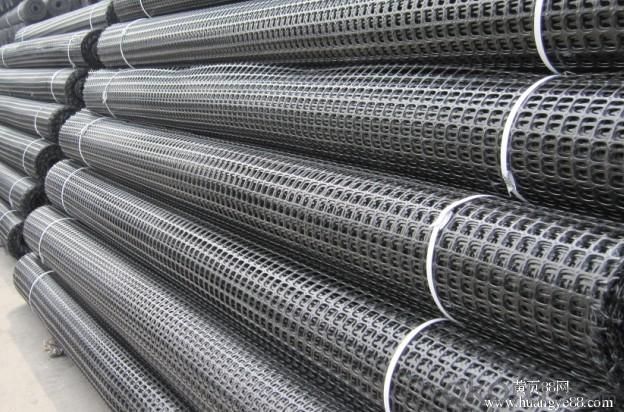
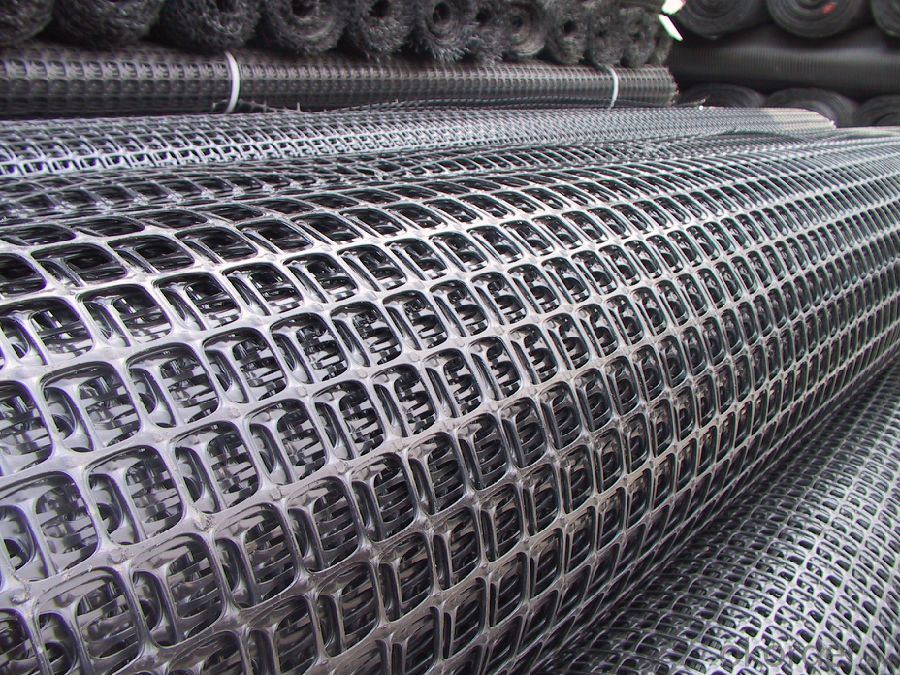
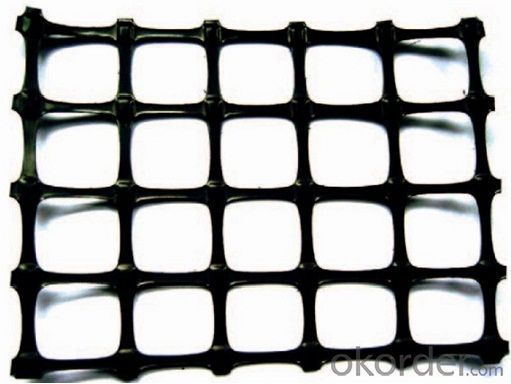
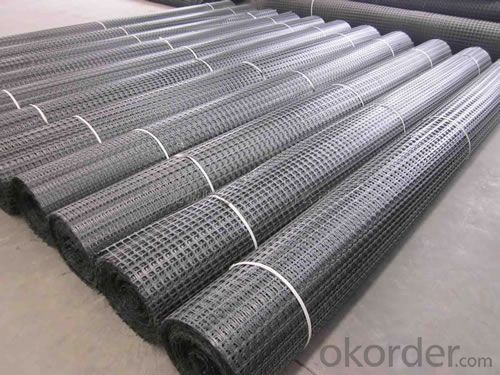
FAQ
Q:Can you provide a sample for us?
A:Yes,We can send free samples,but customer need to pay the freight.
Q:What is your minimum order quantity?
A:The minimum order is negotiable.
Q:What is your payment terms?
A: T/T or L/C
Q: What is your delivery time?
A:Production time usually cost 7-15 days.
Q: Why we choose you?
We have up to 15 years experience of geogrid manufacture. best quality of product is guaranteed!
- Q: Are geogrids suitable for use in seismic zones?
- Yes, geogrids are suitable for use in seismic zones. Geogrids are engineered materials that provide reinforcement and stability to soil. They are designed to improve the performance of soil structures in various conditions, including seismic events. Geogrids can help increase the tensile strength and stability of soils, reducing the risk of soil liquefaction and enhancing the overall resilience of structures in seismic zones.
- Q: What are the procedures for using two-way geogrid
- 4 bidirectional geogrid used to prevent cracks in culvert.5 bidirectional geogrid is used to enhance soil slope and prevent soil erosion.6 bidirectional geogrid used to reduce the thickness of cushion, saving cost.7 bidirectional geogrid for stability of slope greening environment support grass mat.
- Q: What is the vertical spacing of Geogrid
- Geogrid generally by horizontal and vertical staggered from the simple meaning of space can also be understood that the size of the lattice gap.
- Q: What is the difference between geogrids and geotextiles?
- Geogrids and geotextiles are both used in civil engineering and construction projects, but they have distinct differences in their design and function. Geogrids are typically made of high-strength polymer materials and have a grid-like structure, often resembling a net or mesh. They are primarily used to reinforce soil and provide stability to structures by distributing loads and reducing soil movement. Geogrids are commonly used in applications such as road and pavement construction, retaining walls, and slope stabilization. On the other hand, geotextiles are permeable fabrics made from synthetic fibers. They are designed to filter, separate, reinforce, or protect soil and other materials. Geotextiles can be woven or non-woven and are used for various purposes, including erosion control, drainage systems, filtration, and soil stabilization. They are often used in applications such as landscaping, erosion control blankets, and landfills. In summary, the main difference between geogrids and geotextiles lies in their structure and main function. Geogrids provide reinforcement and stability to soil and structures, while geotextiles are used for filtration, separation, and protection purposes.
- Q: Can geogrids be used in retaining walls for highway projects?
- Yes, geogrids can be used in retaining walls for highway projects. Geogrids are commonly used in such projects to reinforce soil and provide stability to the retaining walls. They enhance the overall strength and durability of the walls, making them a reliable choice for highway construction.
- Q: Fiberglass grille width
- Glass fiber molded grating 1.5--1.6 fiberglass pultruded grid 1.6--1.8
- Q: Are geogrids suitable for use in mechanically stabilized bridge abutments?
- Yes, geogrids are suitable for use in mechanically stabilized bridge abutments. Geogrids provide reinforcement and stability to the soil behind the abutments, preventing lateral movement and potential failure. They are highly effective in enhancing the load-bearing capacity and durability of bridge abutments, making them a reliable and commonly used solution in civil engineering projects.
- Q: Are geogrids suitable for use in high-traffic areas?
- Yes, geogrids are suitable for use in high-traffic areas. Geogrids are specifically designed to provide reinforcement and stability to soils and aggregate materials. They are capable of distributing load forces and reducing deformation, making them ideal for high-traffic areas such as roadways, parking lots, and industrial yards. Geogrids enhance the durability and lifespan of these surfaces, ensuring they can withstand heavy traffic loads without significant deterioration.
- Q: What is the difference between plastic geogrid and grid
- Geogrid is suitable for various kinds of dams and subgrade reinforcement, slope and tunnel wall reinforcement. Large airport, parking lot, wharf freight yard and other permanent bearing foundation reinforcement.
- Q: Do geogrids provide reinforcement to geosynthetic asphalt liners?
- Yes, geogrids can provide reinforcement to geosynthetic asphalt liners. Geogrids are typically used to enhance the stability, strength, and performance of geosynthetic materials, including asphalt liners. They help distribute loads and reduce stress, improving the overall durability and longevity of the liner system.
Send your message to us
Biaxial Plastic Geogrids for Soil Reinforcement Earthwork Products
- Loading Port:
- Tianjin
- Payment Terms:
- TT OR LC
- Min Order Qty:
- 500 m²
- Supply Capability:
- 100000 m²/month
OKorder Service Pledge
OKorder Financial Service
Similar products
Hot products
Hot Searches
Related keywords
